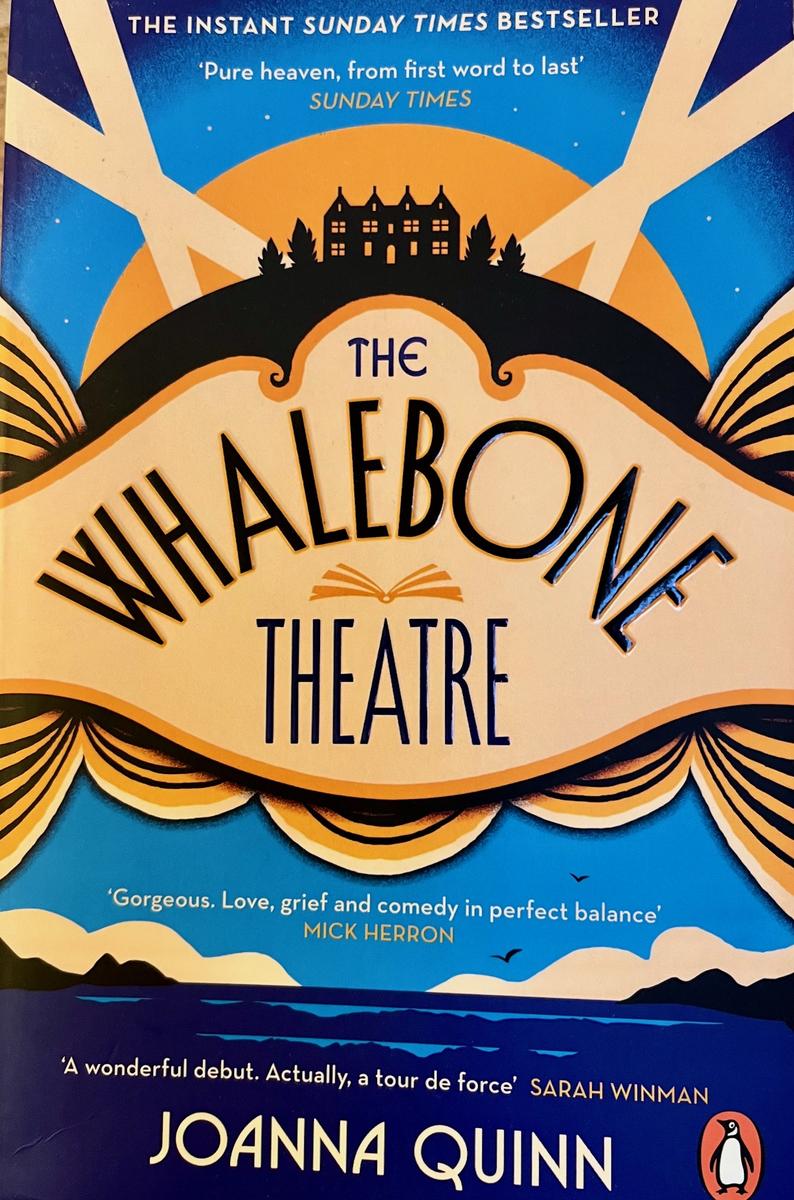
Book Review of The Whalebone Theatre by Joanna Quinn
The Whalebone Theatre was one of my top ten historical novels for 2024. Here’s the full review, with one section for readers deciding what to read next, and a more technical section for writers looking for comparison titles or inspiration.
The headline: Quirky aristocrat Cristabel and her siblings navigate country society, bereavement, wartime resistance and unrequited longing in jaunty yet heartrending historical saga.
For readers…
Setting
The book begins in a decaying Dorset country house, in the aftermath of the Great War. It follows the family to London in the 1930s, and then into the Second World War, crossing into occupied France for the final act.
Characters
Cristabel – eldest daughter of widower Jasper, who we meet aged four as her ‘new mother’ arrives. Assertive, self-confident, independent. Always trying to prove she can master new skills.
Flossie (aka the Veg) – Cristabel’s half-sister, mousy and quiet, but who finds strength of purpose when Cristabel is away.
Digby – half-brother of Flossie. Eagerly adopted by Cristabel, who corrals him into theatrical productions. When he enlists to fight in France, she writes long, desperate letters.
Story
Despite their unorthodox parentage, the three siblings bond in their country isolation, and theatrical projects. But the war drags Digby away and Cristabel is frustrated at being left behind, until she secures an undercover role in France. In Dorset, Flossie finds love that causes as much trouble as happiness, while Cristabel searches obsessively for Digby.
Why read The Whalebone Theatre
Christabel is a force of nature, her bonds with her part-sibllings are poignant, and the interwar years and the chaos of the liberation of France are vividly evoked.
If you liked…
Kate Atkinson, Life after Life; Sarah Winman, Still Life; Sebastian Faulks, Charlotte Grey; or Kristin Hannah, The Nightingale, then you will enjoy The Whalebone Theatre. The first section has echoes of Noel Streatfield’s Ballet Shoes or even E Nesbit.
For writers…
Prose
Written in present tense, with punchy sentences. The first section of the story is told firmly from the children’s viewpoint, with the intrigues of the dissolute adults in their life fading into the background. Short sections are written as letters, diaries or newspaper articles. And other voices appear simply to fill out the backstory of their wider family. The author plays with typography, with some chapters laid out like poems.
Structure
Five acts, with some long time jumps between acts. Chapters are short, with switches back and forth in time and point of view especially in Act 1. Readers must concentrate! Act 2 spans the siblings’ adolescence and early adulthood. Act 3 is wartime, largely told via letters between Cristabel and Digby. Action rises in Act 4, with Cristabel behind enemy lines in France, alternating with Flossie on the home front. (This is the section that for me recalled Charlotte Grey). The tension rises in Act 5, when we finally encounter Digby again.
Historical background
The story is fiction but based on an amalgamation of true stories. The bombing of the Café de Paris in London’s Blitz did happen. A lengthy author’s note covers her research into the SOE in occupied France.
About the author
Joanna Quinn lives in Dorset and teaches creative writing. This is her debut novel.
https://www.joanna-quinn.com/